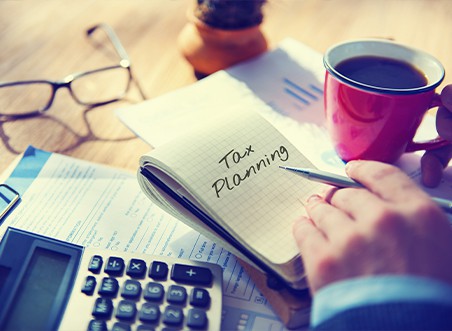Whether you sell at an online marketplace or at a brick and mortar store, sales tax is a part of life for most retailers. If you’re an Amazon FBA seller, sales tax preparation and filing is a bit more complex than it is for average retailers. This can be an even more overwhelming experience if you’re just starting out. We created this Amazon FBA sellers sales tax guide to help you understand the basics of sales tax and make the process less stressful for third-party retailers like yourself.
FBA Sellers Sales Tax Guide
When Do You Need to Collect Sales Tax
As an FBA seller, it’s your obligation to obtain sales tax in states where your selling meets two criteria: sales tax nexus and product taxability. By knowing both you’ll be in a good position to know when and if you are responsible to obtain taxes from your customers.
What is Sales Tax Nexus
Sales tax nexus is also referred as your “significant connection” to a state. If you have sales tax nexus in a state that requires sales tax collection, then you have to charge sales tax to your customers in that state – regardless of where the product is shipped from.
While you automatically get a sales tax nexus in your home state, you can also create nexus in other states. One of the ways that this can happen is when you store inventory for sale in the state. As an Amazon FBA seller, it’s important that you are aware of this. By storing your FBA inventory in Amazon’s warehouse, you immediately have sales tax nexus in a state.
TaxJar lists down the names of all states with an Amazon fulfillment center.
What is Product Taxability
Given you already know where you have sales tax nexus, it’s time to find out whether your products are taxable in those states.
Remember that tangible personal property is taxable and services are not. However, there are a few exceptions to this rule. You’ll find that in some states some product categories are not taxable while a few others are taxed differently.
For example, in Minnesota, clothing and grocery items are non-taxable. In Tennessee, grocery items are taxed at a 5% reduced rate.
If you want to know whether or not the products you’re selling are taxable, you can check it with the taxing authority in your state.
How to Get Sales Tax Compliant
Once you have identified which states you have sales tax nexus and which of your products are taxable, you will need to obtain a sales tax permit or sales tax license.
You cannot start collecting sales tax unless you are registered. Even if your intentions are pure, most states consider it illegal to collect sales tax without a license.
During your application, the state’s taxing authority will tell you how frequent to file and remit sales tax. It could be monthly, quarterly or annually. Your sales tax may also depend on your sales volume or the amount of sales tax you collect.
How to Collect Sales Tax on Amazon
Once you have your sales tax permit, you can now start collecting sales tax from your customers. Amazon provides an advanced sales tax collection tool that will make the process easy for you.
You only have to define the amount you want to collect, the tool will then collect the right rate for you. On another note, you can also add product tax codes so you can charge the correct amount of sales tax on products such as groceries and clothing. This also gives you the option to charge sales tax on shipping and gift wrapping.
Who Needs to File Taxes on Amazon Earnings
Amazon requires all professional sellers or those who go beyond 50 transactions in a calendar year to present their taxpayer information. Amazon provides a self-guided interview process to help you file your information easily.
Make sure that all your information is concise and accurate before you submit it to Amazon. Otherwise, Amazon will not file your form, leading to auditing and penalties from the IRS.
The rules of IRS require Amazon to file Form 1099-K for U.S. taxpayers who either:
- Have more than 200 transactions per calendar year.
- Earn more than $20,000 in unadjusted gross sales.
If you’re not sure how many transactions or how much gross sales you’re making, don’t worry. Amazon monitors all these for you so you don’t have to provide this details manually. If Amazon finds that you meet either of these requirements, they will automatically send you a form electronically or mail it to the address you provided during the interview.
How to File FBA Sellers Sales Tax Returns
Every state has slightly different requirements for filing sales tax returns. Some states require to file and pay online, while some do not.
When it comes to filing your sales tax returns on Amazon, you can do it either:
- Online where you are required to sign in to your state’s taxing authority and submit a sales tax return. The state’s payment gateway will then collect your payments.
- Via an automated sales tax system such as TaxJar and Payability. These third-party vendors automatically prepare your tax reports, file your sales tax returns, and make the payment to the state on your behalf.
Collecting and filing sales tax through your Amazon FBA business should not be a stressful process if you are equipped with the right information and solution. With this guide, you should be in a better position to handle your Amazon FBA sellers sales tax correctly.
If you want to keep track of where your money is going and how much you are getting in return, let SellerMobile help you. Sign up for a 30-day free trial to learn more.





